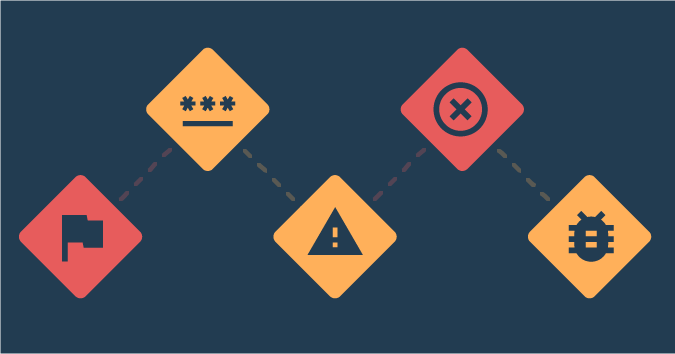This is a guest post by Peter G Walen.
In March, I wrote a piece called “Suddenly Working Remote When You Hadn’t Planned On It.” Now, months later, it might be a good time to revisit the ideas.
Depending on where you are located the situation might be very different from what it was in March. For others, the situation looks very much the same. Some are beginning to bristle as restrictions continue or are reinstated.
Many of us are still wrestling with working from home while children attend virtual classes. Even without kids in the picture, it can be hard if two adults are sharing a small living space most, if not all the time. The challenge of how do you make things like everyone working or studying from home, at the same time, has not gotten any easier.
Then there are the problems everyone is facing. Social interactions have changed drastically. Plans for a casual, quick dinner have new challenges. The “get together after work” events are not happening, at least not in the same way.
When we can’t interact the way we like, have grown used to, and taken as “normal,” what happens then? When a huge part of our social identity is tied to our working/professional life, how do we handle the strain of continued restrictions?
Even for those who had a clear distinction between “work-life” and “life-life,” as the social interactions continue to be reduced, those from the office are looked back at almost wistfully. When we can’t get together as we’d like with friends and family, the idea of grabbing lunch or a coffee with coworkers seems to be one more thing we miss.
Recently, a number of articles have appeared talking about how “work from home” is not as productive as working from the office. I was a remote worker for several years in the days before Covid. This made me curious about what the concerns were.
Normal
One recent example appeared in my LinkedIn feed. The central question of this piece was around dress codes for WFH employees. Loads of comments focused on productivity when “dressed”, as opposed to productivity when wearing casual clothing or sleepwear.
I get that. In my original piece, much of my focus was dealing with people sharing a living space with others, children, partners, whatever. In my experience, during “normal WFH” times this seems a challenge. Wearing clothes similar to what one might wear in the office only makes sense. That also presumes a space where everyone has a space to have a dedicated workspace.
It is challenging to work “productively” in a space not designed or intended for such work. A small apartment or condo with more than one person trying to work as if everything is normal, is anything but normal.
Pushing for “normal” behavior in an attempt to drive productivity seems a little off to me. The idea seems to be if we can keep things “normal” it might help everyone cope until we are “back to normal.” Dress codes are part of “normal” for many companies. It makes sense, right? In some circles, I can see how it might.
What if, as a growing number predict, the “normal” we’ve come to expect is gone and gone forever? How does that impact us?
Interactions
One huge challenge I often see is strain from little or no social contact. The interactions we have come to expect in a highly mobile society have been curtailed. Restrictions on movement and gathering, from limiting ridership on mass transit to limiting restaurant and bar seating capacity or hours, is impacting everyone whose social life, or income, is the “hospitality” or entertainment industries.
While I’m writing this, more people are demanding that things “open up” so people can “live their lives.” At the same time, there are clear indications that another wave of infections is spreading in many places in North America and Europe.
There are many contributing factors to this. Given the increase in calls for assistance for anxiety and depression which mental health specialists are reporting across the US, a significant factor appears to be the sense of social isolation many are feeling.
The separation from work colleagues is just one more form of customary interactions that are not happening. Video calls, chats, virtual coffee/tea breaks and virtual happy hours simply don’t add up to the same feeling of connection.
Instead of lessening, the level of stress seems to be increasing.
Productivity
For many working in software, the change has been hard. Some are working more hours than they were before and finding it hard to focus to make those hours productive. Some are working unusual hours to accommodate partners or children in the home who are also trying to get work done.
Some are working more hours than they would normally. The reasons seem to be related to “feeling guilty” about their situation. Some seem to have developed a “survivor’s guilt” around still being employed when so many others have lost their positions. Some may be trying to show “value” by working harder than normal to avoid being let go themselves.
When looking at the organizations which have seen mass contractions the last many months, many have done mass reductions to allow money to support “critical functions.” Projects that would realize future benefits have been suspended or canceled until the pandemic ends.
It is not uncommon for productivity to see a dip after a large scale workforce reduction. Added to the reduction from the stress introduced by the pandemic a decline is not only reasonable, it is predictable.
There is one other factor at work. Fear.
Even if people have not been “let go” they can easily be afraid they will be next. Hours worked may go up. Activities that look a lot like work may increase. The delivery of actual software? That kind of depends. Some may continue to deliver. Some may falter and see a decrease.
Teams
I’ve seen this behavior many times in my career. Granted, the combination of stresses induced by a global pandemic is a new factor. The end result may be much the same.
A well-functioning software team will continue to function, perform, and deliver good quality software. A team that is capable of performing good work will continue to do so, given the opportunity. While a global pandemic is not normal, large scale layoffs are. Teams will respond based on how their immediate leadership responds. After a period of surprise and shock, most will recover and function well, if they are allowed to.
Imposing new or special “rules” following any large layoff will send messages counter to what the organization needs to send. Demanding remaining teams meet productivity measures, even if they have been long-standing, will only alienate the people you need. People who might not have begun looking for new positions likely will. Demanding standard performance metrics be met during times of stress, like mass layoffs at an organization, will only lead to disincentivizing the workers who remain.
Even if there were no reductions at your company, they are happening at many others. The impact will likely be felt by your workers, if not to the same level as if your company had significant layoffs. Doing this when society as a whole is under stress from factors not seen in a century may well destroy any sense of cohesion the teams have.
Let people know they matter to you as humans first
Thrive
Instead, gentle nurturing may give the results the company needs. Recognize that none of this is normal. Be flexible. Allowing people to find their footing after months of repeated shocks might very well result in the increased productivity one sees from happy teams.
The normal measures likely will not help. Instead, look for the welfare of the people who make up the teams and allow them to find their way. The only certainty of the “second wave,” or third, or any other, is that more stresses will be added.
Letting people know they matter to you as humans first may likely give them a greater boost than any reward for hitting a KPI ever could. Then watch the productivity soar.
Peter G. Walen has over 25 years of experience in software development, testing, and agile practices. He works hard to help teams understand how their software works and interacts with other software and the people using it. He is a member of the Agile Alliance, the Scrum Alliance and the American Society for Quality (ASQ) and an active participant in software meetups and frequent conference speaker.




